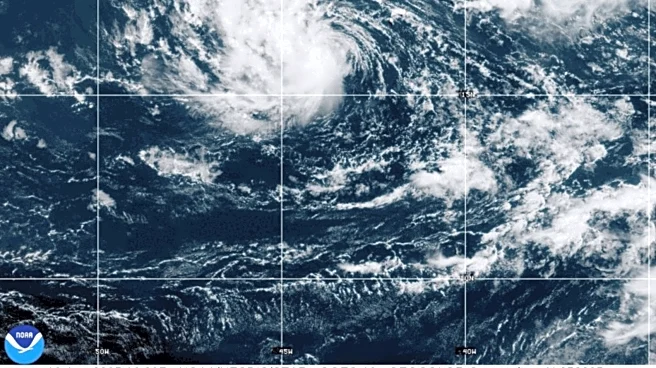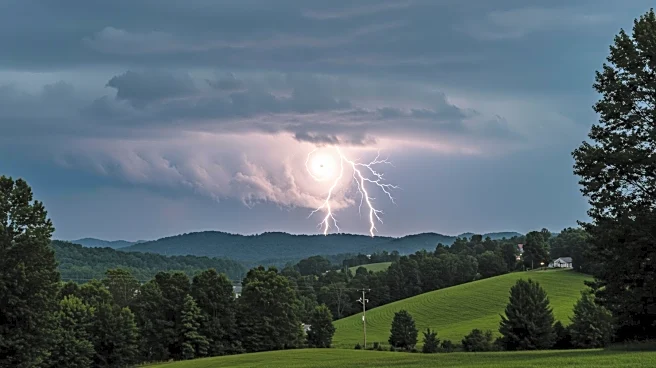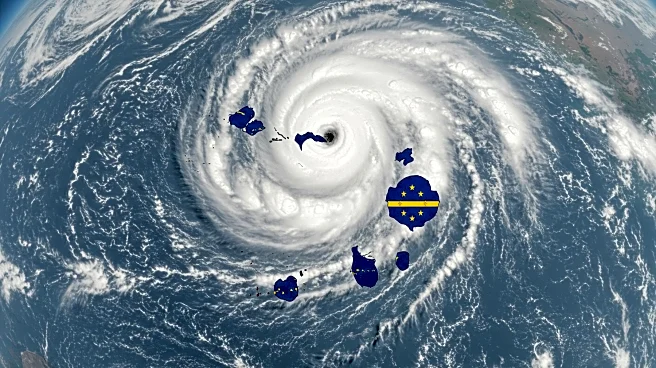What's Happening?
Tropical Storm Erin is advancing towards the northern Caribbean, prompting warnings of heavy rains and dangerous swells. The National Hurricane Center in Miami reports that Erin is expected to remain over open waters, moving north-northeast of islands such as Antigua, Barbuda, and Puerto Rico. Forecasts suggest that Erin could intensify into a hurricane by Friday and potentially reach Category 3 status by late Saturday. This development marks Erin as the fifth named storm of the Atlantic hurricane season, which is anticipated to be unusually active with predictions of six to ten hurricanes, half of which could become major storms.
Why It's Important?
The potential intensification of Tropical Storm Erin into a major hurricane poses significant risks to the Caribbean region and possibly the eastern United States. The storm's trajectory and strength could impact local economies, disrupt travel, and necessitate emergency preparedness measures. The uncertainty surrounding Erin's path highlights the challenges in forecasting and preparing for natural disasters, emphasizing the need for vigilance and readiness among affected communities. The storm's development also underscores the broader trend of increasingly active hurricane seasons, which may be influenced by climate factors such as warmer ocean temperatures.
What's Next?
As Erin progresses, meteorologists and emergency management officials will closely monitor its path and intensity. Residents in the Caribbean and potentially the southeastern United States may need to prepare for possible impacts, including heavy rainfall, strong winds, and coastal flooding. Authorities may issue advisories or evacuation orders depending on the storm's development. The situation requires ongoing attention to updates from the National Hurricane Center and local weather services to ensure timely and effective responses to any threats posed by Erin.












